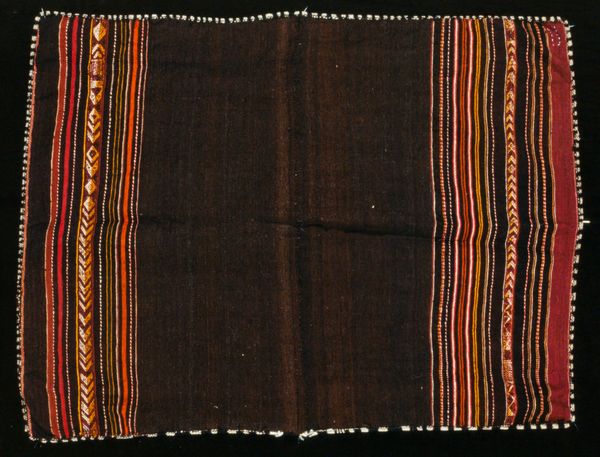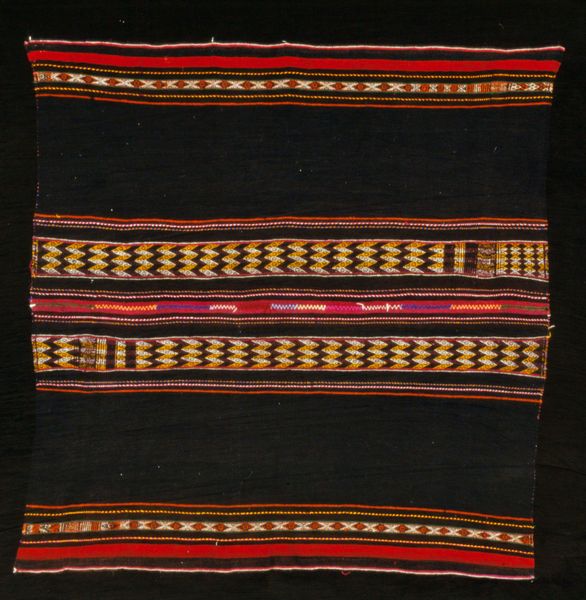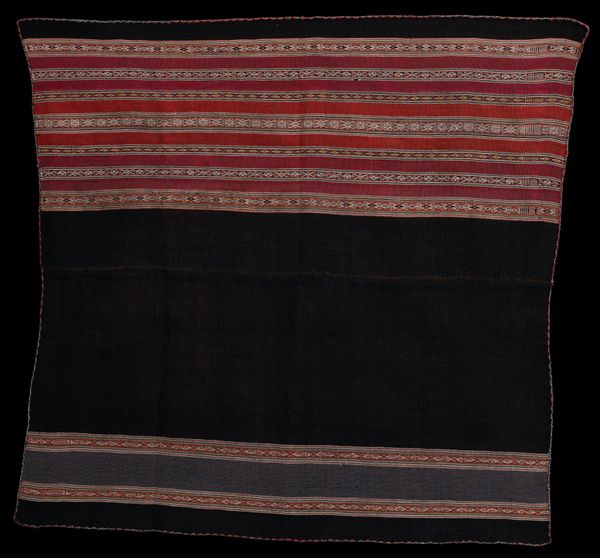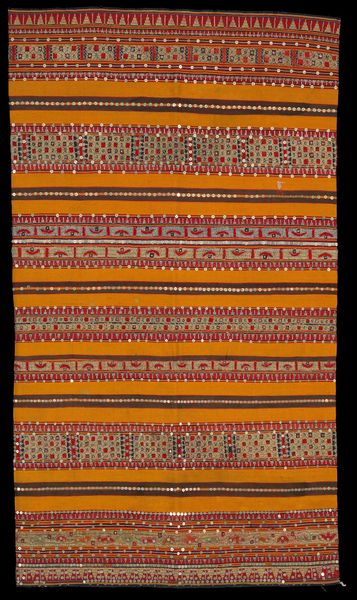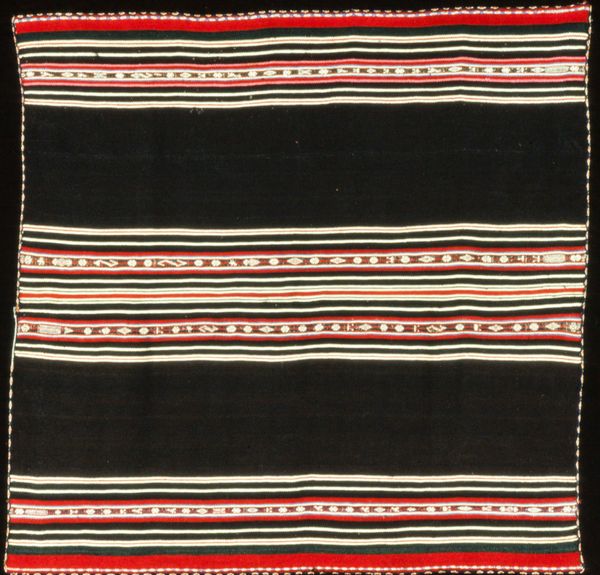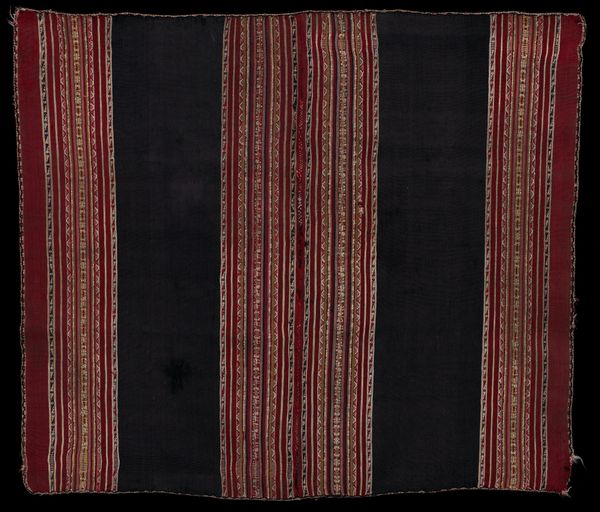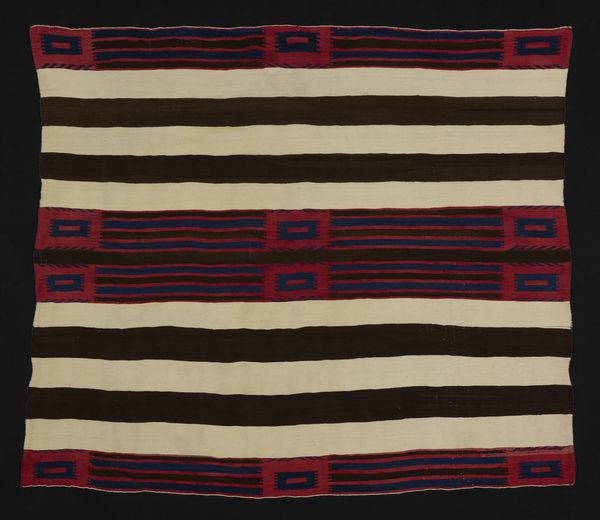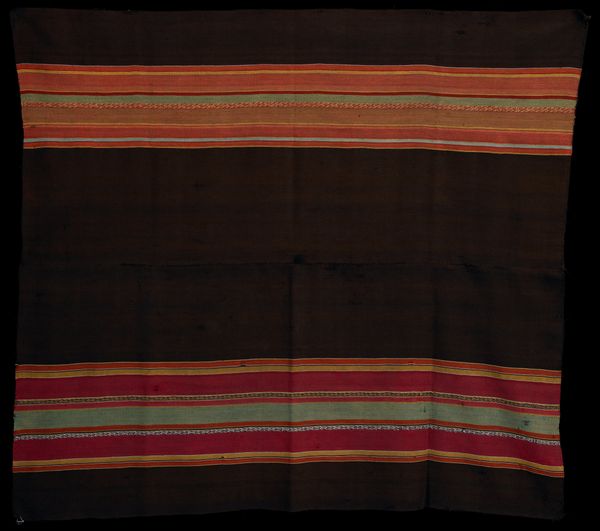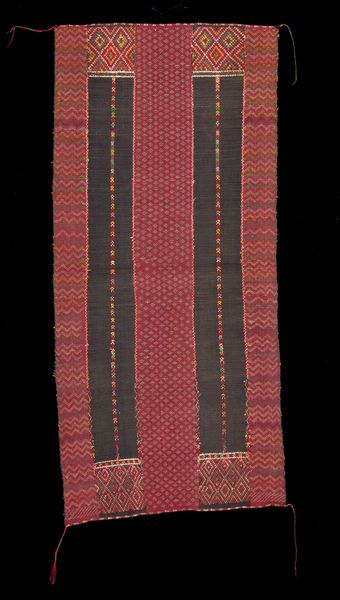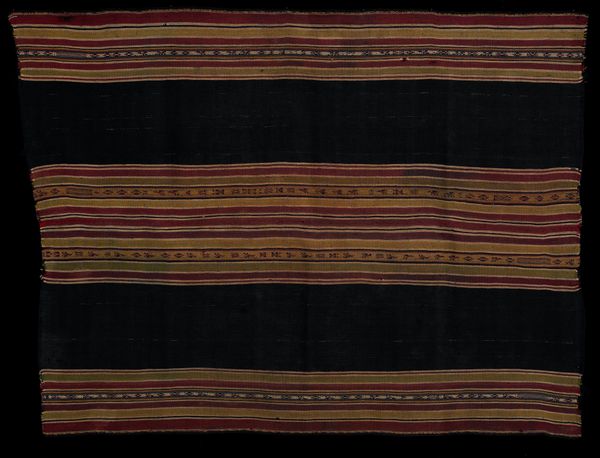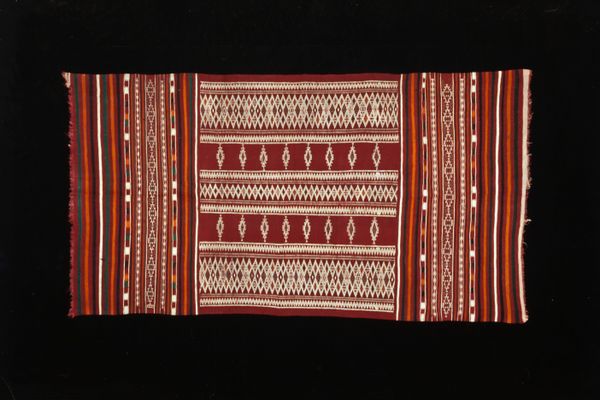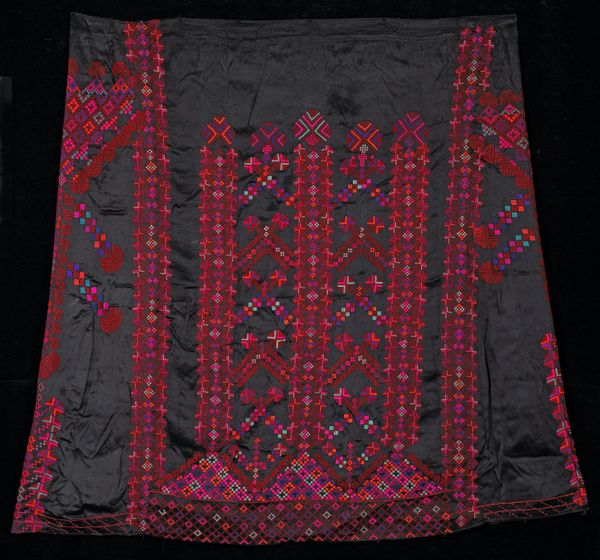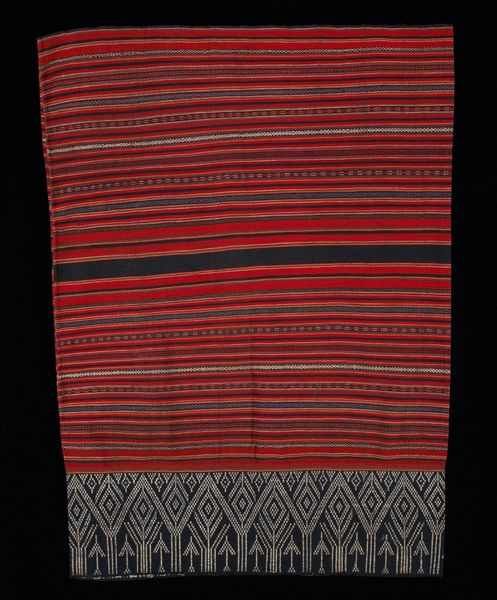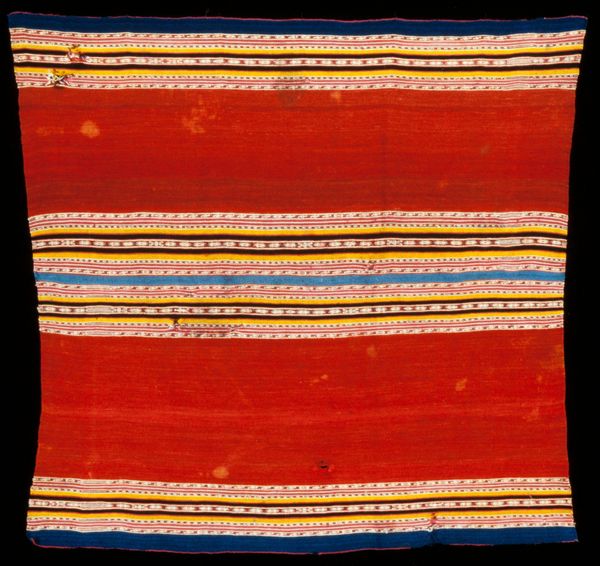
weaving, textile
#
weaving
#
textile
#
geometric pattern
#
geometric
Dimensions: 30 1/2 x 27 3/8 in. (77.47 x 69.53 cm)
Copyright: Public Domain
Editor: This is a woven cotton textile called "Wrapper" from around the 20th century. It's part of the collection at the Minneapolis Institute of Art. I'm immediately drawn to the strong horizontal bands and geometric patterns. It feels very grounded, almost architectural, despite being soft and pliable. What do you see in this piece, considering its role and historical context? Curator: The "Wrapper", a textile piece rooted in African art traditions and the Pattern and Decoration movement, begs to be interpreted through its socio-cultural utility. We must remember textiles are hardly just 'decoration', they’re potent forms of visual language. Where and how it was displayed impacts our reception and perception of its value and significance. This piece, I feel, powerfully challenges western art world biases. Editor: I can see how something so practical becomes incredibly layered depending on its display and how we choose to value different forms of art. I hadn’t considered the active role it plays, versus something static like a painting. Is that something specific to this piece, or to textiles in general? Curator: That friction is inherent to textiles due to its usage. Considering its location in a Western museum, how does it affect your reading of this piece? Does its geographical displacement change its narrative? Does this distance amplify or diminish the intent it had within its original context? Editor: That's a powerful point. It definitely forces me to think about its journey and how its meaning shifts in different cultural spaces. So, the museum itself becomes another layer of context. Curator: Precisely. And isn't that fascinating? Its value becomes not just aesthetic but also intensely political, cultural, and historical. This piece highlights the museum's role in constructing art historical narratives and shaping our perceptions of non-Western art. I never thought about how my own perspective shifts when placed outside of their intended location! Thank you!
Comments
No comments
Be the first to comment and join the conversation on the ultimate creative platform.
